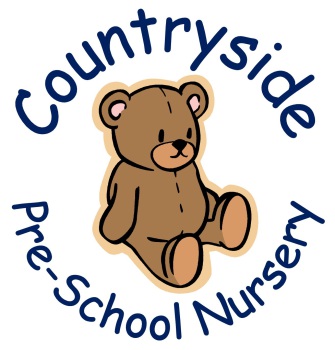Please contact us by using the contact tab above
or call
Sue-07860381847
Our opening hours are:
Monday to Friday
7.45am to 5.45pm.
You choose your own hours
You can find us at:
Countryside Pre-School Nursery
Little Canfield Village Hall
Stortford Road
Little Canfield
Essex
CM6 1SW
Our Curriculum, Pedagogy and Vision
Our curriculum and pedagogy overlap as we follow the curiosity approach
Pedagogy is about how we educate children and help their development. It’s the techniques and strategies you can use to provide opportunities for development and how your relationships and interactions with children can affect them.
The three P’s of pedagogy are.
- Principles- your fundamental teaching truths
- Practices- what you do in your teaching practices to reflect these truths
- Perspective- your unique take on the field of education and everyone’s roles in it
Together these Three P’s form the foundation on which you build a visible pedagogy in your teaching practice. From your inner truths, emerge achievable practices that create a transformational effect on children’s lives.
It is important to know your pedagogy and even more important to make it visible. When you do, you can stand with confidence in any circumstance.
Our curriculum intentions are
- to make transitions to, from and within the nursery as smooth and easy for our children and their families.
- A play-based approach where the children’s ideas and suggestions form the basis of our planning
- Following spontaneous child led activities including ideas brought in from home
- Ensuring a homely and welcoming provision for our children where their development can thrive through exciting resources and nurturing adults to meet their full potential.
- Following the intent for each individual child- following their own ideas appropriate to their own knowledge and development levels.
Transitions will form a big part in our curriculum- from a child starting in our Little Bears baby room, to leaving for school. We also put a heavy emphasis on supporting transitions through the child’s time with us- whether it being a transition to another setting, moving to a new house or separating families etc.
Examples of transitions
Before starting nursery
- Mummy Meetings
- Settling in sessions- both independently and with parents/carers
- Longer transitions if necessary, after discussions with parents/carers
- All about me booklets- sharing information form home about the child’s likes and dislikes and favourite things to support transition
Transitions within the nursery between rooms
- Working on self-help skills that will support the child within the over twos room
- Interaction time within the over twos room
- Meeting new key worker and other group members
Transition to School
- Teacher visits
- Time in school
- Extended Self-help skills- including holding lunch on a tray and getting changed into PE kit
- Extending practical learning skills within our zones and areas at nursery to support learning in school- adult led for support
- SEN- extra support
The vision of our nursery is based around The Curiosity Approach
The curiosity approach is a pedagogy developed by Lyndsey Hellyn and Stephanie Bennett and is all about providing a safe and comfortable environment for a child to be curious.
The basic principles are,
- Using natural materials and neutral backgrounds that prevent overstimulation
- Children should become independent thinkers who can explore their environment with curiosity
- A homely environment is key to making children feel safe and comfortable
We chose this approach as a method to bring new resources into our setting, replacing a lot of our plastic, hardwearing resources with natural, neutral, and real-life resources that children have the opportunity to take risks, learn consequences and become curious of resources that they would normally not be able to access for safety reasons.
We have started this process slowly and have started by adapting our home corner area, table activities and our garden and will slowly adapt the rest of our provision in order to fully convert to the curiosity approach.
We are making sure that this process isn’t rushed and that we choose the correct resources to ensure that we implement this correctly and fully Implant the approach to the nursery where appropriate.
It affects our provision as the real-life resources rather than indestructible plastic teaches children that they can take risks but equally they can have consequences from their actions either good or bad- i.e., breakages etc
We have provided a calmer environment removing bright and colourful resources and replacing them with neutral-coloured objects, equipment and resources include rugs and equipment as well as the equipment the children play with.
We have invested in items that spark curiosity in the children and promote the discussions that they bring! Resources have been brought from charity shops, boot-sales, and items from our own homes that the children would see in their own homes as well as natural resources such as bobbins, log slices, moss balls, etc that the children can use for a variety of play/learning such as counting, building etc
Our outside provision is a continuation of the curiosity approach adding natural resources to our garden with half of it a dedicated natural garden with real life resources in our mud kitchen, wood, stones, and tyres in our construction zone and using real tools in our digging area. Our outside area promotes daily physical exercise and risky play.
We also have opportunities for the children to extend their curiosity at our allotment
The Forest School Pedagogy focuses on the children having opportunities to learn though hands on experiences in a woodland environments/open fields/allotment/trees and orchards.
The basic principle
- A lot of learning takes place outside in a woodland and natural environment
- Children are trusted to explore, discover, and are allowed to take risks
- Encouraged to make our own choices within learning and development
- Staying close to nature
Well-being and mindfulness sessions for children and adults are fully accessible within our holistic approach.
Our Intent
As we transition further into the curiosity approach, we will continue introducing new ideas and methods to the staff and the children and adapting our provision accordingly.
Plans include removing all of the large, coloured rugs, and replacing them with neutral style rugs.
Removing as many of the chairs as possible within the nursery- leaving them accessible when needed.
Reading into Hugge- the Scandinavian approach to living well.
References.
- The Curiosity Approach
- Jigsaw Early Years Consultancy
- Local Safeguarding Children’s Board
- Birth to Five Matters
- Fairy Dust Teaching
- Marmalade Academy
- Well-Being and Mindfulness Resources
- Gem’s Healing
Would you like to learn more about our approach?
Please contact Sue on 07860 381847 or use our contact form.


